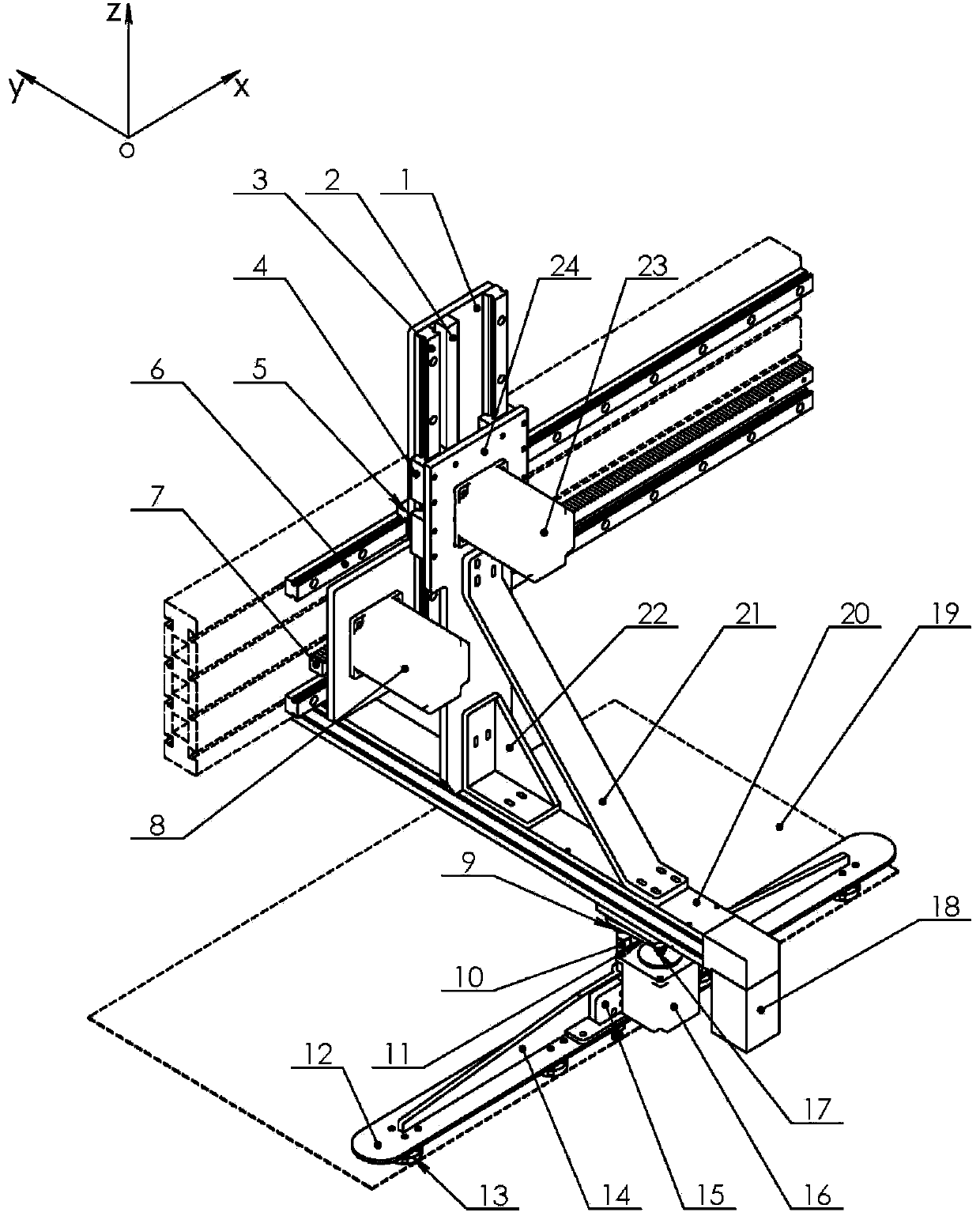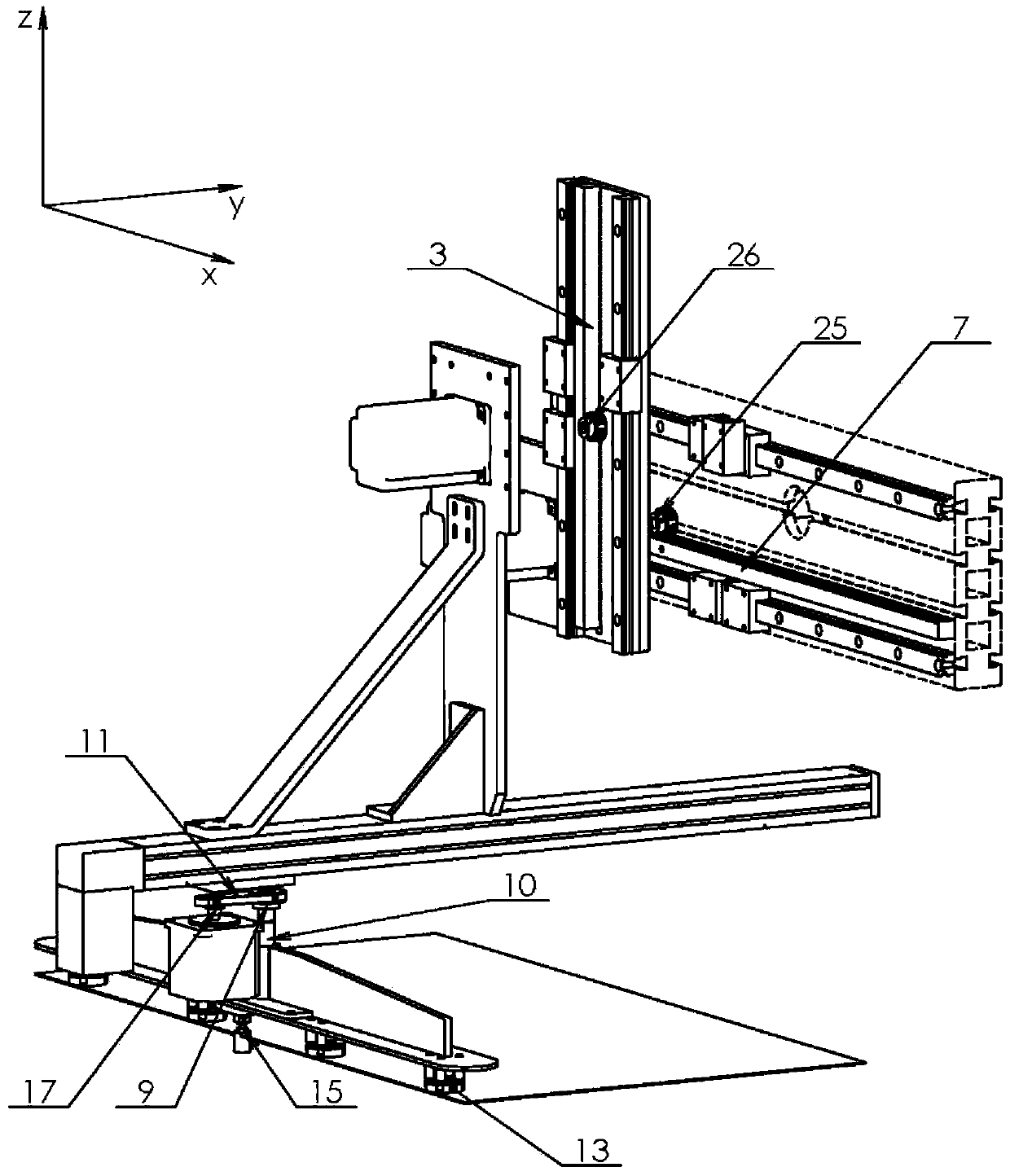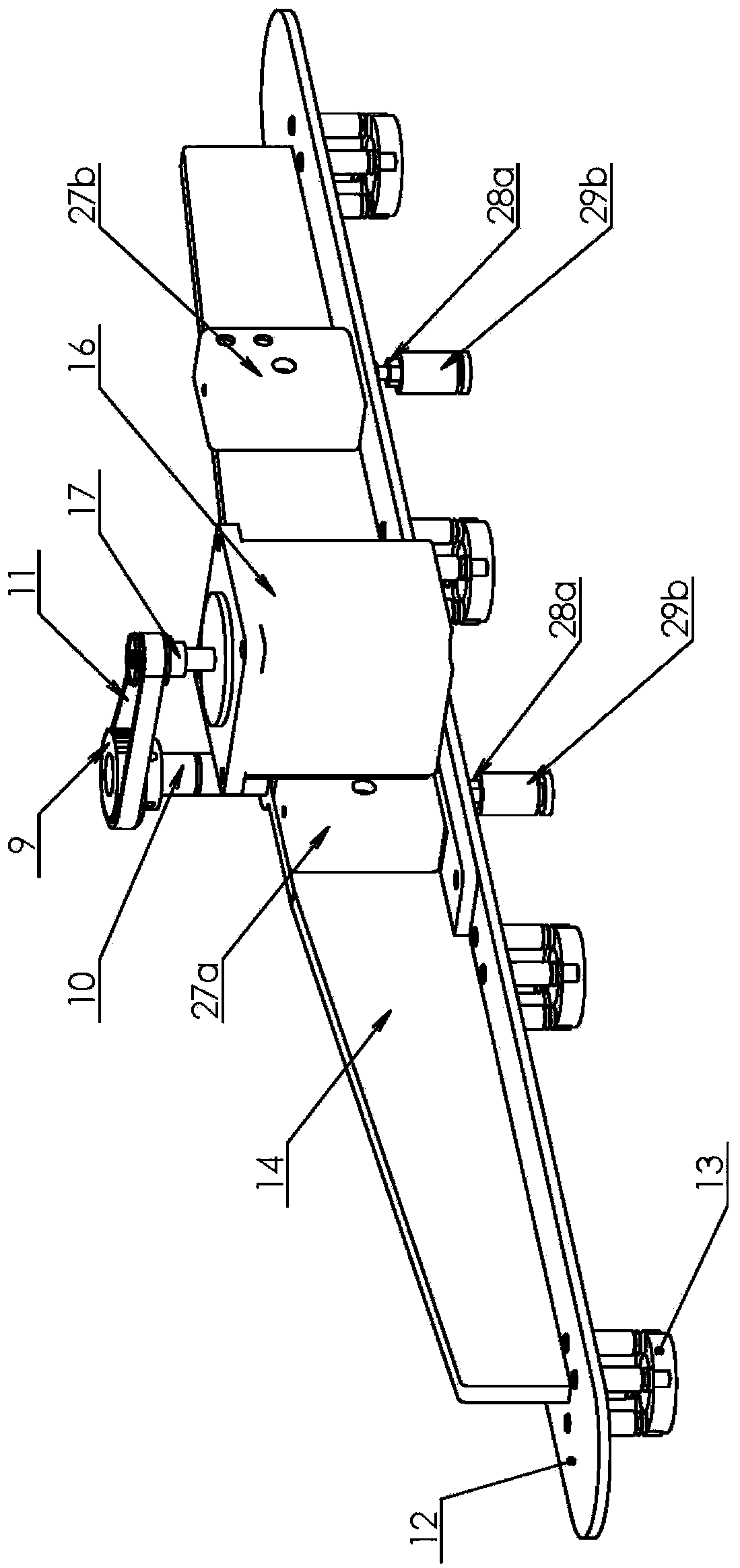Cloth taking device for sewing machine capable of taking and feeding cloth fully automatically
A cloth device, fully automatic technology, applied in the direction of sewing machine components, cloth feeding mechanism, sewing equipment, etc., can solve the problems of low work efficiency, high labor intensity of operators, etc., achieve ingenious structural design, strong practicability, and reduce work intensity Effect
- Summary
- Abstract
- Description
- Claims
- Application Information
AI Technical Summary
Problems solved by technology
Method used
Image
Examples
Embodiment Construction
[0027] The present invention will be further described below in conjunction with specific embodiments and accompanying drawings.
[0028] The theme of this embodiment is the taking and distributing device of the automatic taking and feeding placket keyhole machine, which detects the pressure signal between the sensor 15 and the cloth 19 through the sensor to automatically absorb the cloth layer by piece, and is driven by the taking and distributing device itself. The system sends the cloth 19 to the designated required position.
[0029] see figure 1 , 2 , the left and right movement direction of the sewing press feeding device is defined as the X axis direction (left and right direction), the up and down movement direction of the cloth picking device is defined as the Z axis (up and down direction), and the X axis direction and the Z axis direction are perpendicular to the two directions The direction of is defined as the Y-axis direction (front-back direction).
[0030] S...
PUM
 Login to View More
Login to View More Abstract
Description
Claims
Application Information
 Login to View More
Login to View More - R&D
- Intellectual Property
- Life Sciences
- Materials
- Tech Scout
- Unparalleled Data Quality
- Higher Quality Content
- 60% Fewer Hallucinations
Browse by: Latest US Patents, China's latest patents, Technical Efficacy Thesaurus, Application Domain, Technology Topic, Popular Technical Reports.
© 2025 PatSnap. All rights reserved.Legal|Privacy policy|Modern Slavery Act Transparency Statement|Sitemap|About US| Contact US: help@patsnap.com



